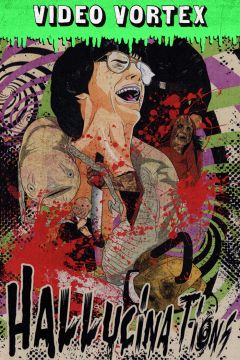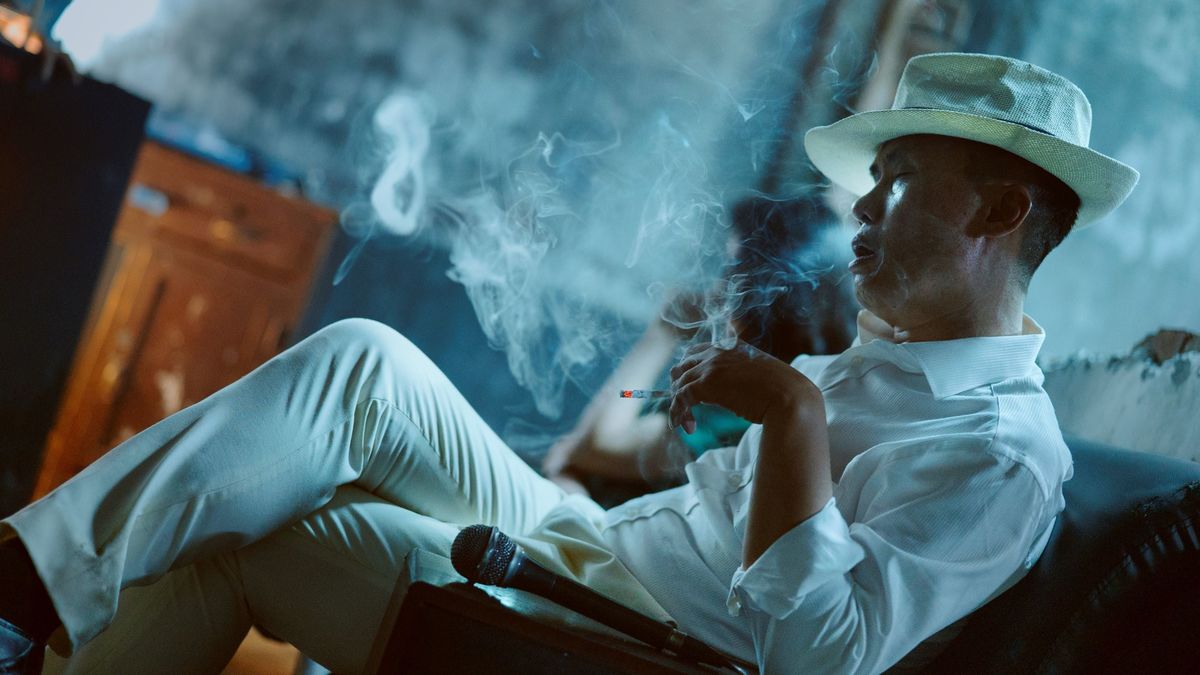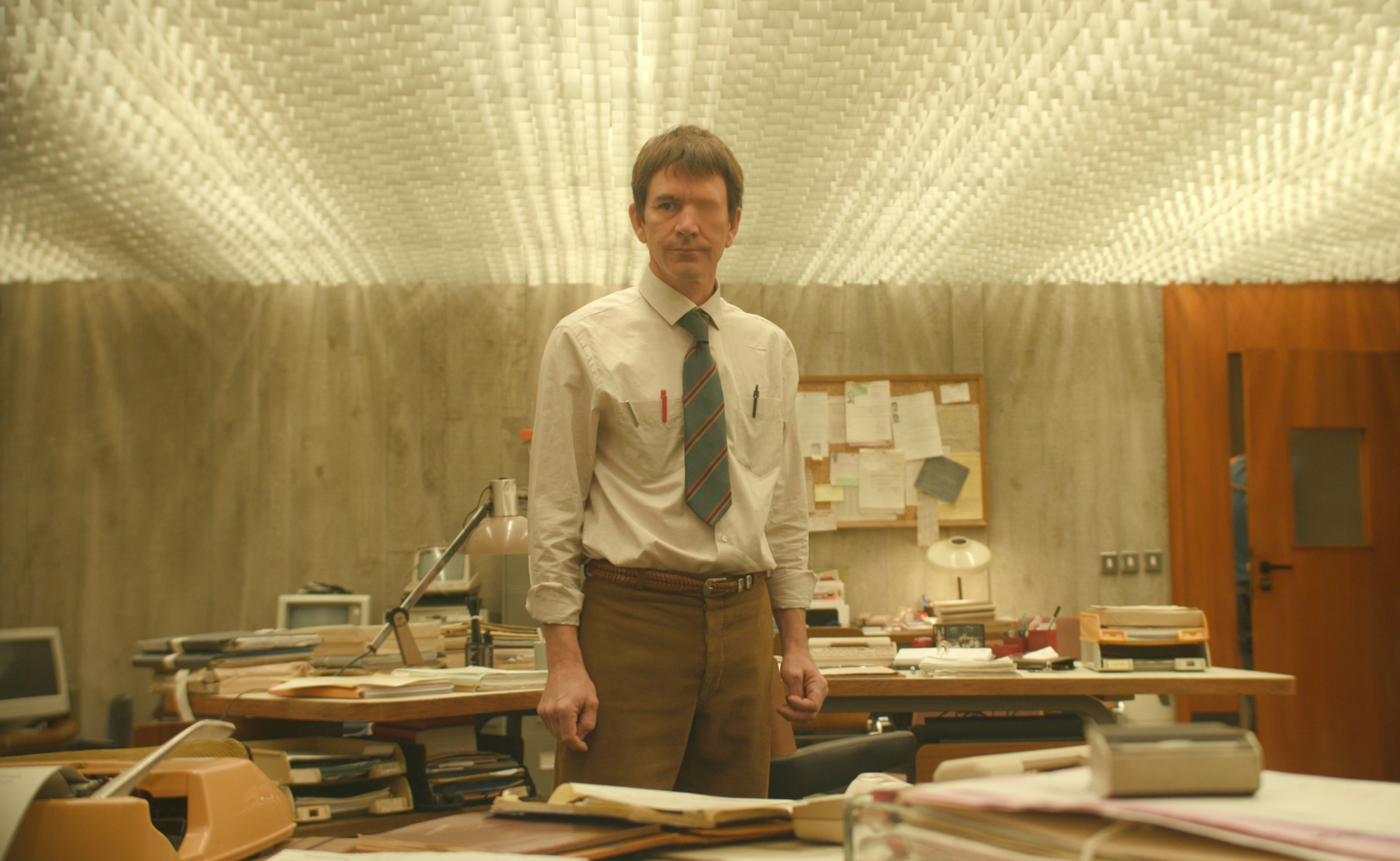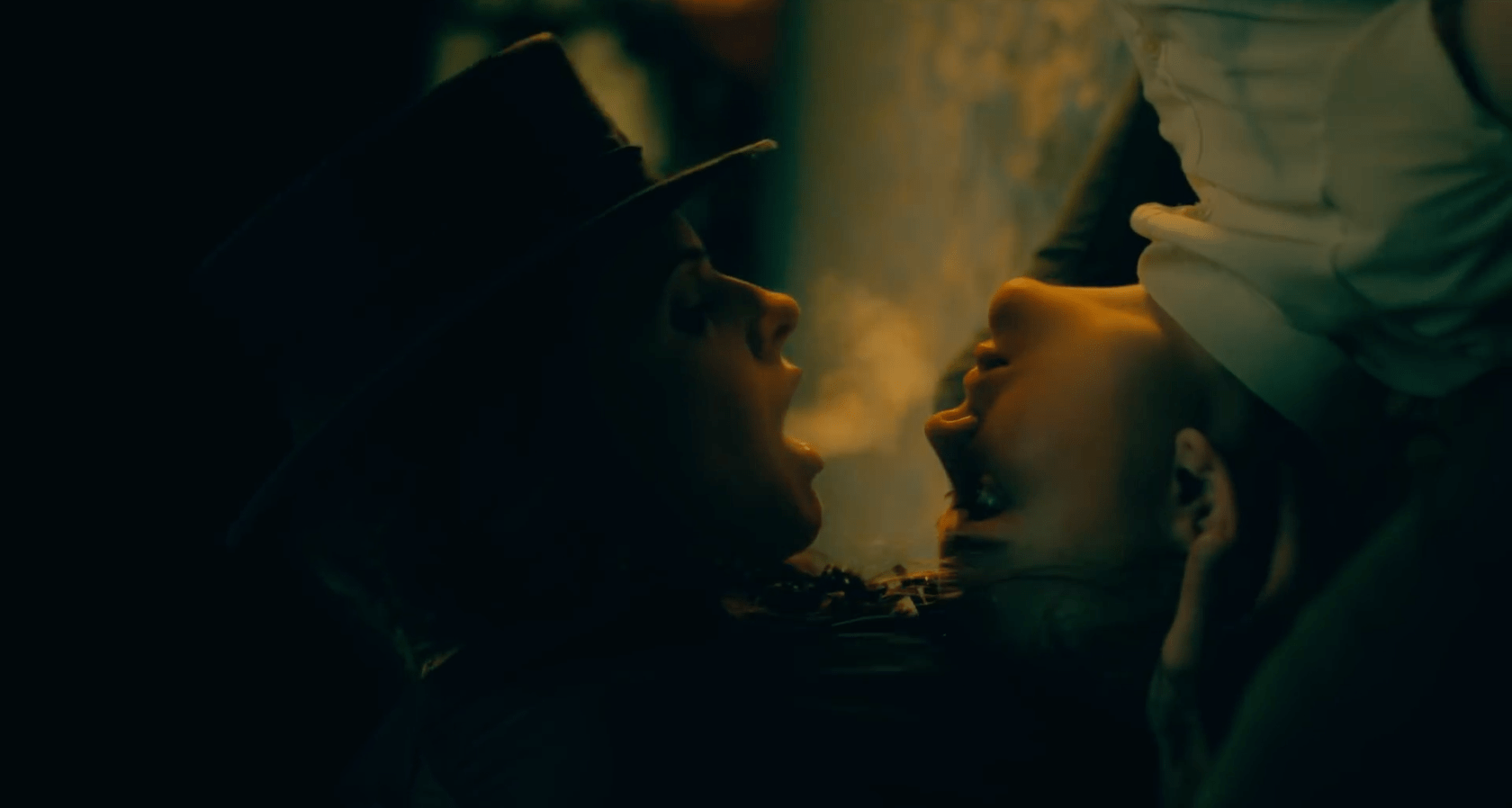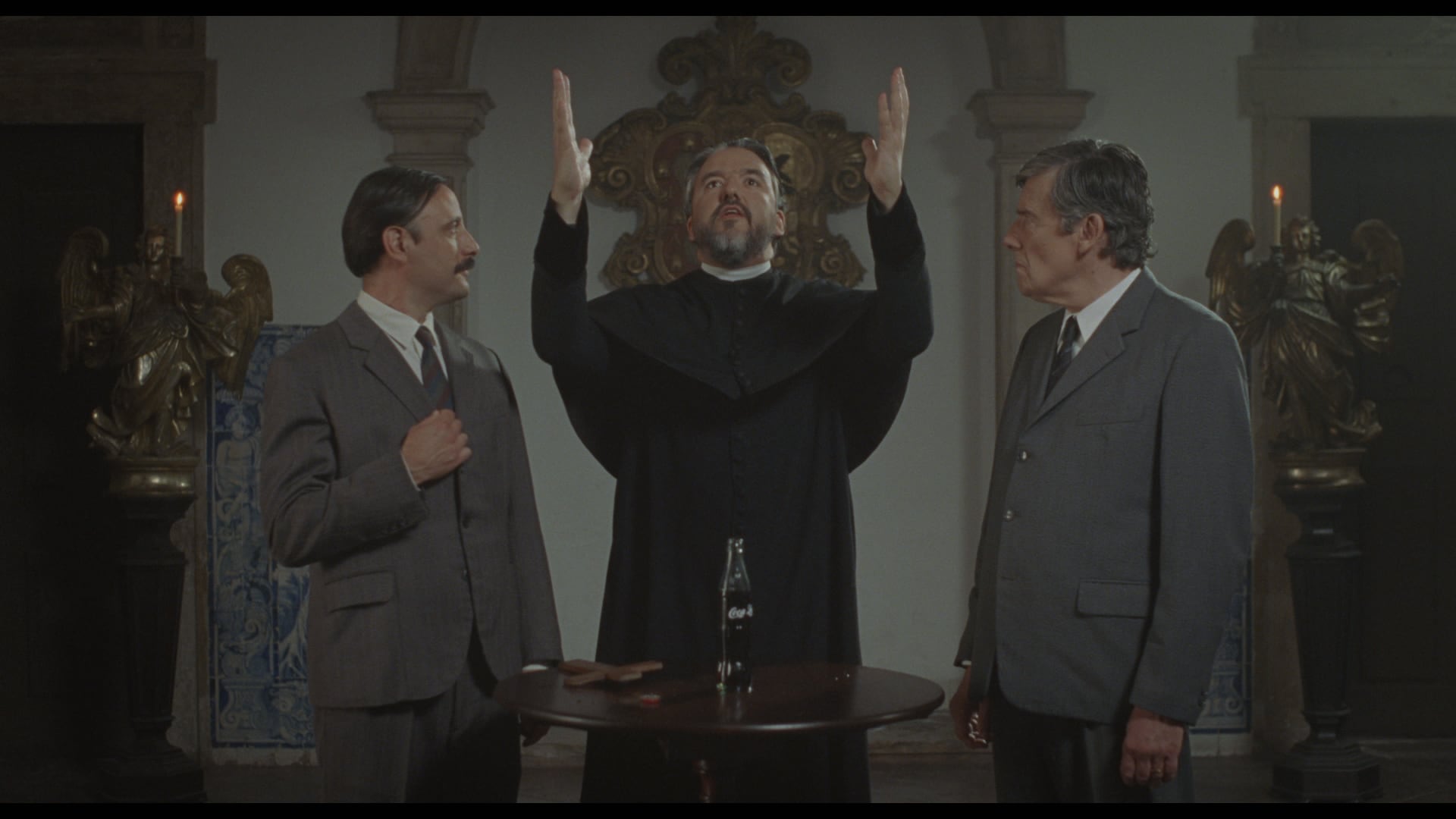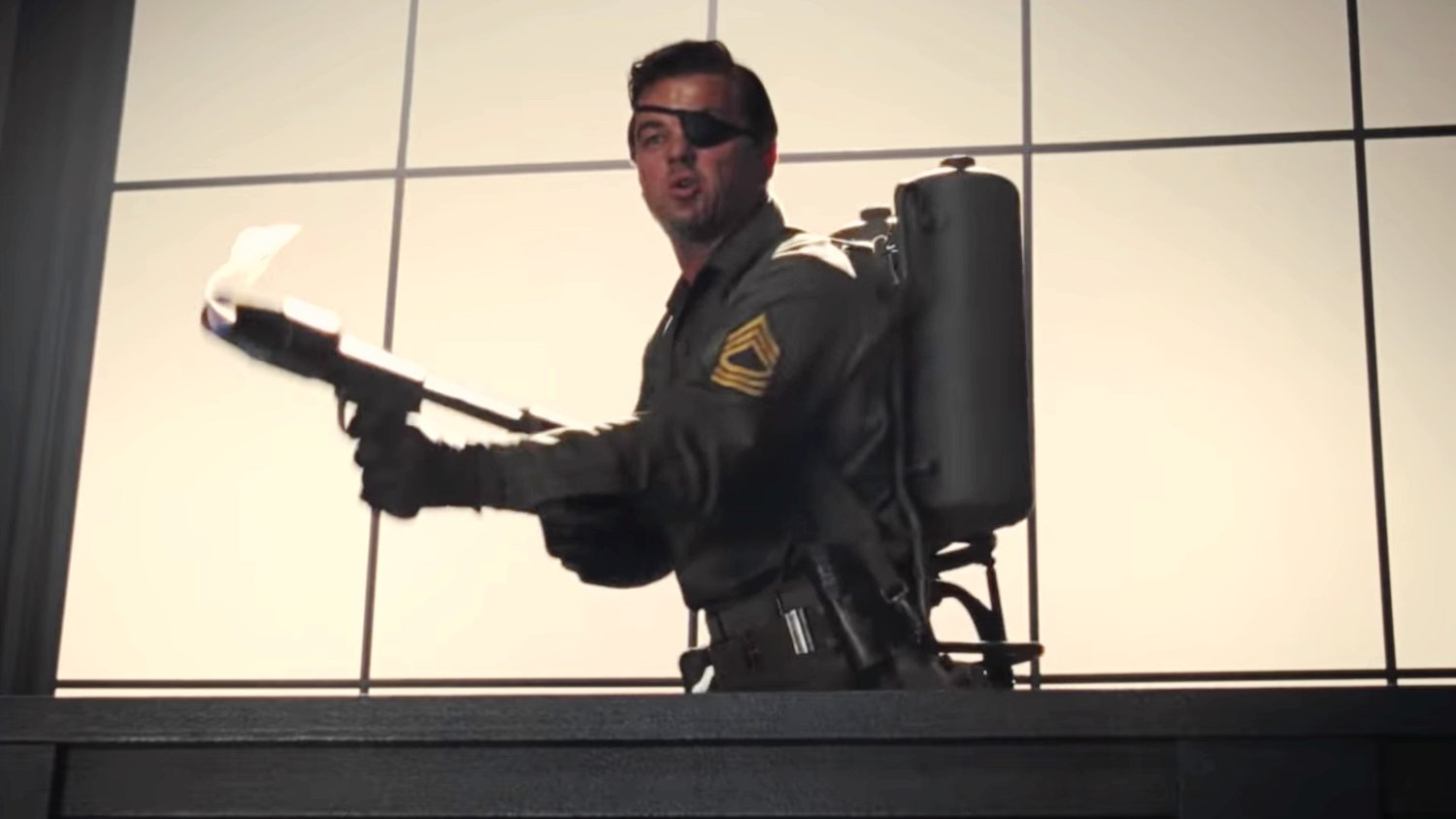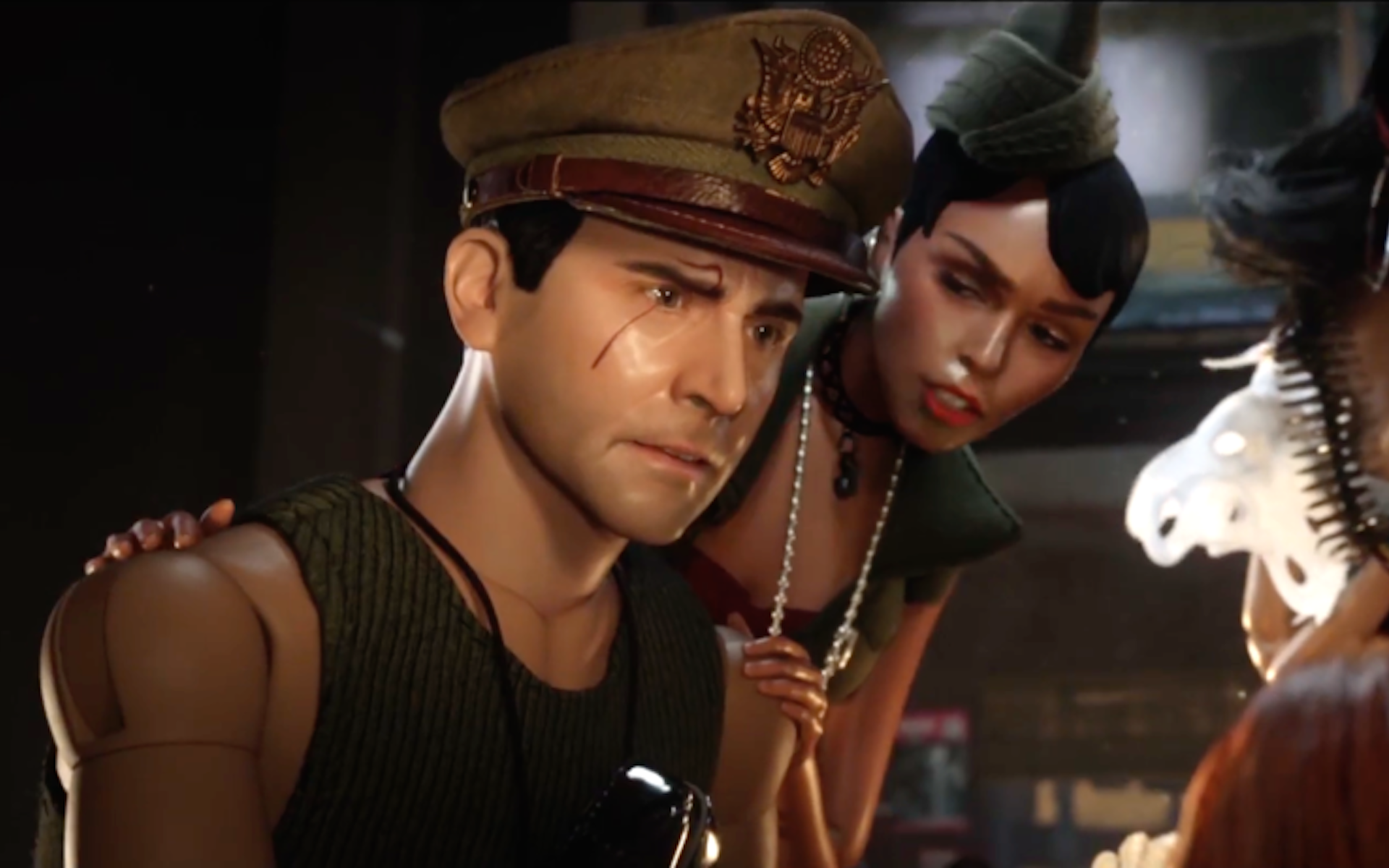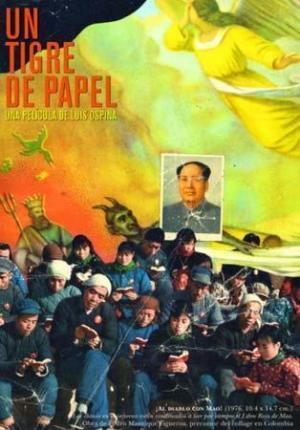Link to the first part HERE.
Link to the second part HERE.
Link to the third part HERE.
20. Long Day’s Journey Into Night (2018) [UK Theatrical Premiere]
Bi Gan's newest film is a fascinating piece to even consider. Its
notorious debut and success in his homeland of Mainland China is itself part of
the tale, as Long Day... premiered
on New Year's Eve in its homeland and marketed as a romantic film, gaining a
huge box office sum in spite of the fact it's actually an experimental crime
soaked romantic drama. One into two halves, the first clearly indebted to Wong Kar-Wai, the final half shot in 3D
and a single take, much to the bafflement of paying customers just expecting a
conventional romantic drama to pad out a very important holiday.
I don't want to either dismiss or
just openly embrace Long Day... yet
as Gan's film is full of details I
wouldn't be surprised grow in layers on multiple watches, something that I
think is necessary to fully appreciate this work. It's a tale about a man
obsessed with a woman which yet can distort the chronology with flashbacks to
the past and also has, in that middle split, actors switching roles including
the legendary actress Sylvia Chang throughout
the feature length. The visible debt to Kar-Wai,
who was making films like this before from Days
of Being Wild (1990) onwards is felt, and possibly could be an accusation
of Bi Gan making an empty imitator,
but so much in Long Day... has stuck
with me.
That final half, whilst
tragically one I couldn't see in 3D as intended, has become one of the best
moments of the entirety of 2019 and not just as a technical feat either,
something spectacular in terms of a sudden jump into magical realism, even if it's
by way of just the camera being carried along great heights by the production
crew, to bittersweet romance and having to execute as long a take as possible.
Sadly a film like this is going to be nigh on possible to see as intended
unless we drastically change how cinema is distributed to everyone - even in
Sheffield, a major cultural city in England where I saw the film, I couldn't
see Long Day’s Journey Into Night as
intended, losing Bi Gan's trump card
having its full impact. Thankfully in just being able to see it, I witnessed a
unique film still.
19. Hustlers (2019) [World Theatrical Premiere]
Here is a film I am surprised is
as high on the list as it did, having felt originally Lorene Scafaria's second feature suffered from not fully tackling
the moral complexity of its subject, the subject of a New York magazine article
where female strippers in the midst of the late 2000s economic crash started
drugging male clients and stealing their money. As time has passed however, Hustlers despite being the kind of
conventional narrative American cinema I usually forget about has managed to
stay higher in regard in my mind over some particularly experimental and
ambitious work, which is a feat in terms of how when Scafaria succeeded, she knocked so much out of the park in terms of
successes.
And its really a compilation of
successes. Constance Wu standing out
in the lead. When Jennifer Lopez makes
a triumph first entrance into the film, managing to pull her own weight in
terms of a great performance throughout afterwards. The moments of female comradery,
particularly at a scene over a Christmas Day this is touching. The nightmare of
the driverless car. The moments of moral complexity which remind you that,
actually, what these lovable characters are doing is morally wrong and
problematic, laced with the reasons why they'd be pushed to it, the banality of
a day-to-day job, and the whole issue that the male clients robbed are hesitant
to even get cops involved, revealing gendered issues that add flavour. Only the
sense that a) there's an entire aspect of these characters' blind obsession
with material wealth that needed to be raised and b) some more moral complexity
lacking suggests Hustlers has any
flaws, still a great film in the film. It's definitely a superior take on a
similar subject Sofia Coppola tackled with The
Bling Ring (2013), a significantly deeper take on its own subject of
criminality involving materialism than in that case.
My only hope is that Lorene Scafaria, after this as Hustlers did very well, becomes more
ambitious and takes more risks as she clearly has the chops to make good films,
just needed to take a plunge into more idiosyncratic cinema. Also the person
who choose all the pre-existing music also needs to be hired more if they
aren't already, as it actually suggested that I have been dismissive to bubbly
electric-tinged pop music and RnB from that era for far too long, some of the
best timed choices of music here in any of the work on this list.
18. Keep an Eye Out (2018) [MUBI Streaming Premiere]
Quentin Dupieux has sadly not had any of his films barring Rubber (2010), the ideological text of
the Cinema of the Abstract blog in honesty, released in the United Kingdom in
the 2010s. This is a tragedy as he's one of the few people of these odd films I
adore who have been consistently making movies over the 2010s, when many falter
or are prevented from, and Keep an Eye
Out as a peculiar farce under eighty minutes is just golden. Somehow he
keeps getting work produced, and he's effortless in this mini tribute to the
likes of Luis Bunuel and absurdity
that he can qualify as an unsung auteur if this is his usual batting average.
Following a simple scenario - a
police detective questioning a witness - this tiny little film gets into some
deliciously absurd, and well acted, scenarios worth seeing if you can.
Individuals will find themselves in another person's flashback. A clam with
shell will be eaten. And you will be very careful from now on when holding an
angled ruler, let alone begin running with one, in case of injuring oneself.
17. The Endless Film (2018) [MUBI Streaming Premiere]
From one fascinating MUBI discovery to another, this Argentinean
project one which has stuck with me as, per its non-English title La película infinita¸ the possibilities
are endless when it is built around unfinished films from the film museum in
Buenos Aires, constructing that which exists into a form to watch but can have
beginnings, no ends and bleed into half dreamt dreams. Whilst the execution
does have to try to put together a drastic variety of material which can be
awkward in production, from a previous attempt at adapting the novel Zama from 1984 that Lucrecia Martel eventually completed in
the 2010s to an animated sci-fi film, it's compelling to even see the
unfinished.
It is also unmistakably weird and
eerie at points to watch, as some of the larger portions have so much potency
in what was never finished, like surreal mini sketches. A woman investigating
one man finds herself shooting another in a room with a fish tank, whilst
another seemingly has a man obsessed with the drawings of Leonardo Di Vinci in what feels like a monochrome surrealism horror
film. All of it is compelling, and the obscurity of such an experiment is a
tragedy to consider when it's as strange and rewarding as this result. Quite frankly,
the idea of there being a La película
infinita for every nation's cinema, of unfinished films compiled togehter,
is tantalising to consider seeing this.
16. Doctor Sleep (2019) [World Theatrical Premiere]
And here we have a film
overcoming a huge obstacle. Director Mike
Flanagan, who is arguably one of the most successful horror directors of
the 2010s just for how prolific he was, when faced with the task of adapting a
sequel to Stephen King's The Shining, but contending with the
1980 Stanley Kubrick version the
author notoriously had issues with, found a mercurial balance between them
where both communicate together. Notably, this feels less like the horror
product sold at the end of October 2019 but a serious film in its own right,
less frightening but clad in a melancholic darkness tinged in hope. That it is
entirely dealing as much with King's issues with alcoholism and addiction, as
it is as a dark tale of soul devouring immortals, is a huge factor in this when
it is as well executed as possible.
Also in mind of this being a big Warner Bros. release, Doctor Sleep is surprisingly
unconventional, with some of the best and most inventive uses of CGI in the
genre as well finding a way to make its sudden change into world building,
which has a level of absurdity to the plot and its mechanical if thought about
long enough, still work. When The
Shining is explicitly referenced, and becomes the backdrop of the finale,
this is a rare case of a film following on from the original that doesn't feel
like its besmirching the original's good name. By referencing The Shining with
actual emotional resonance, Flanagan manages
to success; as the first film of his I have seen, this is a good sign to
investigate his career further.
15. Ad Astra (2019) [World Theatrical Premiere]
Whilst there are still films left
from the old order to be released - Terence
Malick's A Hidden Life (2019)
for example, which got a January 2020 release in the United Kingdom - seeing James Gray's Ad Astra felt like a ritual funeral for 21st/20th Century Fox before Disney
bought them, as for every commercial film they releases, Fox took some very idiosyncratic and artistic risks over the
decades I am slowly growing to admire. Some were just gauche, but their work
even up to the Disney acquisition is
of a very different kind of cinema from the blockbusters they sold like the X-Men franchise, not just experiential
risks but The Old Man & The Gun
(2018), director David Lowery with
Robert Redford making the kind of
film Fox themselves among others made
back in the seventies, which is idiosyncratic in itself before you realise this
is the same studio that bankrolled Terence
Malick's The Tree of Life (2011)
but also Zardoz (1974)...
Ad Astra does have action beats you could put in an enticing
trailer, and they are still spectacular, James
Gray interesting as the "serious" director who however started in
crime narratives and explored aspects like this before in his cinema like in We Are The Night (2007). Also of note
is that, as here, Fox's more
ambitious work under their label or Fox
Searchlight sub label tried experiences as long as bankable actors could be
on the marquee, to which Brad Pitt is
to be thanked for a very underappreciated American director to get a multiplex
release finally which isn't compromised in the slightest. There are suspicions
the theatrical release had important aspects excised, such as the complete lack
of Liv Tyler, but considering how
much of a cerebral sci-fi film this is, so much still succeeds.
And it's surprisingly bold for
this type of film too, right down to
Gray
hiring "experimental film consultants" to
influence
the visual structure of his film.
It's a better take on a bleaker sci-fi existentialism than
Claire Denis' High Life in honesty as, whilst the film does have a dark viewer of
our place in the world,
and Denis' film
is still great, the main theme is discovering hope and oneself at the end which
offers something considerably more powerful in the end then emptiness, felt
with a sense of scale in terms of an adventure narrative (even Moon pirates)
that gets the balance right. Also this will not be the last time
Brad Pitt is on this list, a man who has
thankfully earned the reputation (if he hadn't already) that even if his face
sells the film as a big star, he likes to produce and star in bold films like
this we all win from.
14. How Fernando Pessoa Saved Portugal (2018) [MUBI Streaming Premiere]
Eugene Green, an American born French filmmaker, has sadly had
little of his work available which is a shame as, having the luck of seeing
almost if not all of it, he is a truly unique figure, felt like a cross between
Robert Bresson with a whimsical
nature that occasionally appears, with the influence of all the good bits of
Christian thought without any of the terrible aspects no sane person would (should?)
believe in. He is idiosyncratic, the man of high art and music, Christian
theology appearing in his film, but one of his best film reinimagines a
medieval fantasy where the knight is a man in jeans with a pet lion (i.e. a
dog) and no viewer would not be able to get past it in the end.
For his "short
feature", this tale of how real life poet did try to get into advertising
just to make some money, can be read on multiple levels. An obvious anti
consumerism joke, as his advertisement for a brand of cola gets the soft drink
banned in Portugal, gets more complicated knowing that Coca cola was banned in
Portugal until the late seventies and that the film is littered in very
idiosyncratic details, from the various forms of Christian thought clashing to
the notion of a former King who disappeared in a war only to turn into a legend
that will return to rescue Portugal. The main star Carloto Cotta also immediately stands out as someone to watch as a
damn good actor, so drastically contrasted by his role in Diamantino (2018), a film that I sadly could only catch after the
cut-off point of films for this list; suffice to say, contrasting his innocent
child-like football player character in that film's lead to two roles here,
drastically different, presents us with both a striking physical prescene in Cotta and also a great Portuguese actor
to watch, especially as he's starred in some pretty idiosyncratic films from
his country I need to actually get to now.
Plus this short feature has a
cola bottle being exorcised, which is as funny as it sounds and is also one of
the scenes of the year. I am deliberately leaving that unexplained and request,
if you can, just to track down and watch the film yourself.
13. Once Upon a Time… in Hollywood (2019) [World Theatrical Premere]
Quentin Tarantino's latest is a curious film to unpack isn't it? It's
had its detractors, especially when one of its leads (played by Brad Pitt, in another bloody good
performance) is a morally grey figure just for a flashback with a harpoon gun
despite being very likable. It's also evidence of, between him and the Coens, the later sadly jumping to Netflix for their last film, Tarantino has been one of the only major
Hollywood directors able to get away with films that do well at the multiplex
that can be this unconventional. That might be too simplistic, as one hopes
there are major talents getting away with unique films, but as a director who
always gets a large summer premiere for his films in English multiplexes,
always so far in the late summer, no matter how unconventional and even violent
they are is something really to consider as a minor miracle.
Plus this film by itself would be
considered odd if dissected from anyone. A multi strand period piece which
reinterprets the Manson Family murders, an ode of late sixties American cinema
(not the hippy stuff, but all the uncool movies), possibly a very conservative
ode to b-movie westerns and macho TV series, a buddy comedy, a great acting
role for Leonardo Dicaprio, and
something difficult to actually pin down in what it actually is when originally
we presumed this to be Quentin Tarantino's horror film when he first planned it.
There are some issues. The
violence for me was the very divisive issue, not helping with the concerns of
this being an ode to problematic traditional "values". The Bruce Lee versus Brad Pitt scene may have been an ill advised decision depending on
the context the viewer views it through in honestly. Aside from this, its
constantly hilarious, always rewarding even in terms of the pop culture it is
reference, and has a spine tingling conclusion as, playing to alternative
history again, Tarantino does hit a
bitter sweet nerve that has stuck with me over the year as one of the best
endings of the films I've seen. This is definitely a difficult film to judge
for opinion, but Once Upon a Time...
is this high up because of how ambitious the film was and all the moments it
feels like a master auteur, the old guard, hitting all the right moments. Its definitely
a film too that, even if he does intend to retire after only a couple in the
next decade, as Tarantino has
threatened, argues he as one person where every film he's made is unique and
has to be unpacked by itself, earning that because of the virtues. People might
grumble, might think he's overrated, but as someone who at Inglourious Basterds (2009) was considering dismissing him entirely
as he dropped the ball miserably too many times at that period, only to see
everything he made throughout the 2010s on the cinema screen, gives me the
sense of having seen his detractors' side but come to admire the man
nonetheless when he succeeds.

12. Ash Is Purest White (2018) [UK Theatrical Premiere]
Another veteran, and Ash Is Purest White accomplished an
awakening realisation how I slept on Jia
Zhangke, who like Quentin Tarantino
defies what genre actually is and takes such incredible risks in this narrative
tale. He is a very different director, before anyone wants to stretch the
comparison, but this is yet a film that starts in a crime mood, of a gangster's
moll who, over multiple time periods, grows when arrested back at the start of
the Millennium. The moment where Zhangke
tackles the obscure aspect of China's UFO culture, in the middle of a desert
like country region, was where he won me with his bravery and willing to take
any risk just because he went in a director, in what's in the night sky, that
you'd never expect to find from a sombre director like this. Its bravado that
is pulled off and from the least expected source, showing how good he is.
Guided by Zhao Tao, who has been in almost all his films, Ash... takes constant inspired tangents
throughout interlaced with great dramatic sequences lead by Tao's incredible performance. Jumping
through different time periods, including a return to the Three Gorges Dam, the
subject of his 2006 film Still Life about
the flooding of the region for a damn, to a sequence of Tao trying to con awkward men in a restaurant for money to the UFO
side piece, so much of the film (effectively vignettes) stands out still upon
reflection.
The miniscule pieces of political
commentary when they appear are subdued, more of the changes to mainland China
by way of the hedonism of the first half, to the grounded reality as a former
female criminal has to survive in the new world she returns to. And even then, Zhangke causes you to wake up when he
suddenly has a fight scene involving motorbike helmets in the middle of a
crowded night street, a scene you would never expect from a naturalistic
filmmaker like Zhangke, but is
executed like the best of an action film with the added virtue of a director of
his style bringing new aspects to it.
Ash is Purest White as a result,
alongside Long Day’s Journey Into Night,
do offer some promise into the 2020s of individualistic cinema coming from
mainland China. In spite of the many issues with Chinese politics let alone in
terms of cinema, where they've pulled films out of film festivals, and the
taste for blockbusters that dominates, these films feel like subversive gems
without needed necessarily to be heavy handed in politics, just defying
conventions.
11. Welcome to Marwen (2018) [UK Theatrical Premiere]
And finally, before we reach the
Top Ten, probably the most controversial choice this high up as Robert Zemeckis' peculiar biopic is an
acquired taste. Really it begins with the creative decision to try and make a sanitised,
feel good version tale of the life of Mark
Hogancamp, a man whose life was documented in Marwencol (2010), a documentary I saw in the early 2010s showing
how, after a vicious beating left him permanently debilitated, Hogancamp rebuilt himself through a miniature
fantasy World War II village populated with dolls which recreated tales of his
life and fantasies, eventually gaining traction as an artist as his photographs
of these stories caught peoples' attentions. His is a tale worth seeing.
Hogancamp's tale is also much darker than a film that was released
as suitable for twelve year olds to see. There is explicit details at hand in
his work, a man who is open with his obsessive collection of women's shoes
whose beating was a result of him openly admitting he was a cross dresser,
material that needs to be treated with care for him. There's also a fetishism
coming into his work as this village, in-between gruesome death as Nazis permanently
try to attack it, is also populated by tough sexy women based on real women in
his life, alongside the clear sadomasochistic aspects that occasionally appeared,
as his hunky square jawed stand-in can find himself stripped and beaten by said
Nazis quite a bit. Its content, this and the subject of trauma, leaves Welcome to Marwen visibly in conflict with
itself, a fight between a sanitised and sweet tale where Steve Carell plays him as a lovable man against Hogancamp himself, who in Marwencol can only be seen as utterly
sympathetic but is a character even in the fictional version who is so much
more complex and shaded. Especially with how Carell plays him and the plot, where he takes interest in a female
neighbour, there's a darkness in this fictional version which leaves the
question of how much is this the film getting away from the director, or is the
director knowing where he was heading.
Also, not only does the film
succeed in this compelling and frankly jarring complexity even as a film, let
alone its form itself being antagonistic to itself, the execution of what
Marwencol (Marwen) is in the fantasies itself is Zemeckis, after his constant obsession with radical special
effects, finding something legitimately surreal where the quirks of his
experiments blossom rather than become vices. The film has to dance a merry
dance around the sexualisation of the dolls, the actresses involved and Steve Carell turned into dolls, but it
is some of the most unique and visually idiosyncratic of CGI animation
particularly when, compared to Cats
(2019) where super realistic cat effects are an unintentional nightmare,
this literal doll logic with appropriate physics is compelling and successful. Really the only thing of indulgence is how the
director managed to sneak a Back to the
Future reference, but aside from that I have no shame this film is this
high on the list both in its unintentional complexities and how it manages to
nonetheless work as a real Hollywood oddity, one with merit rather than a car
crash like the aforementioned flea ridden felines.
To Be Continued...
 For today, we have what is
regarded as Jim Jarmusch's less
regarded film. Openly, on the offset, I have come to love The Limits of Control initially in mind that, in lieu to a career
of mainly dialogue heavy films, and with his debut Permanent Vacations (1980) the weakest I have seen, the reputation of
the film comes as much from how boldly he stepped out of his comfort zone
rather than whether it was an artistic disaster or not. The tone is one you
have to appreciate immediately or the film will not work. Tonally, the choice
to score the film to drone metal is the perfect symbol of what Jarmusch's last 2000s film really is, a
stretching of simple factors as furthest as possible in slow prolonged riffs
which build. To watch The Limits of
Control is the director-writer stretching his obsessions and a crime story
to their extreme minimalism.
For today, we have what is
regarded as Jim Jarmusch's less
regarded film. Openly, on the offset, I have come to love The Limits of Control initially in mind that, in lieu to a career
of mainly dialogue heavy films, and with his debut Permanent Vacations (1980) the weakest I have seen, the reputation of
the film comes as much from how boldly he stepped out of his comfort zone
rather than whether it was an artistic disaster or not. The tone is one you
have to appreciate immediately or the film will not work. Tonally, the choice
to score the film to drone metal is the perfect symbol of what Jarmusch's last 2000s film really is, a
stretching of simple factors as furthest as possible in slow prolonged riffs
which build. To watch The Limits of
Control is the director-writer stretching his obsessions and a crime story
to their extreme minimalism.

